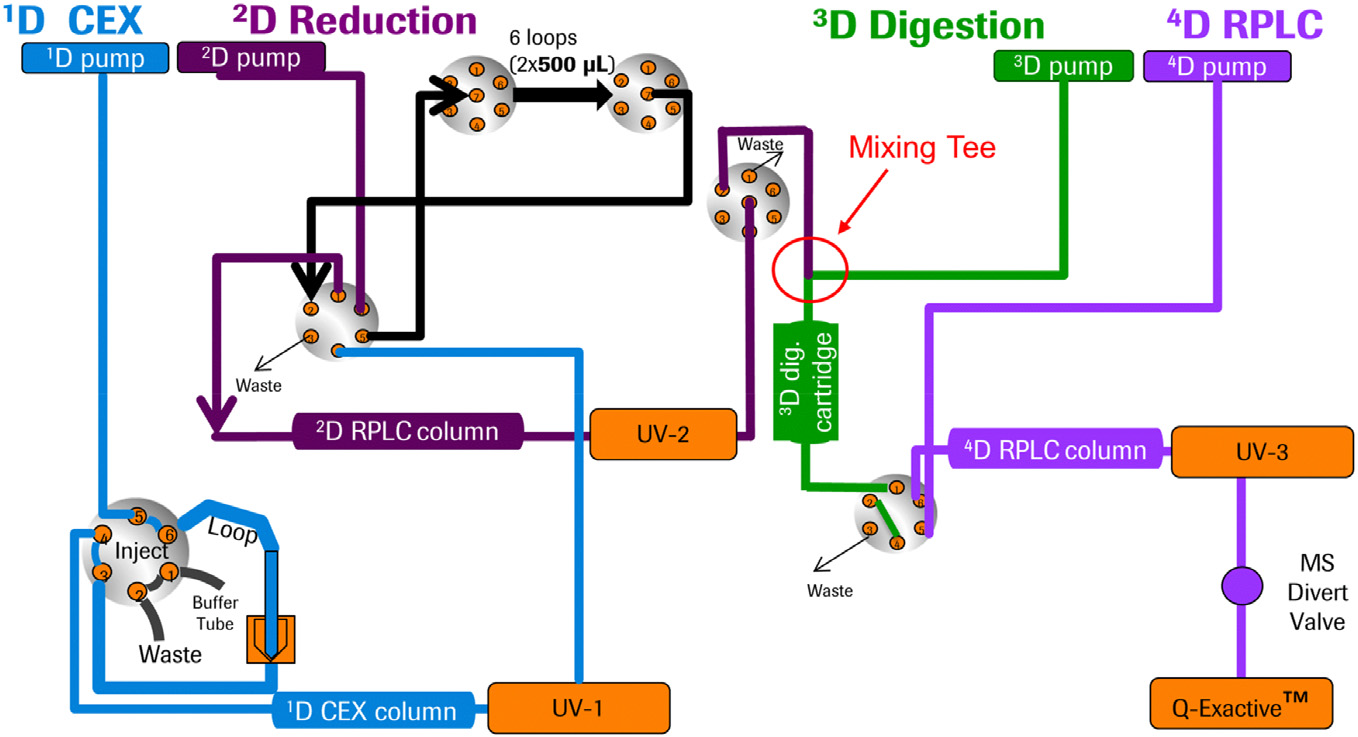Beyond the Limits of LC: Towards 2D-LC and LC-MS

Due to the complexity of the samples we analyze, we routinely couple our LC methods with mass spectrometry (MS) and often employ multidimensional LC separations with UV, fluorescence, or MS detection. We were among the first to apply 2D-LC to protein biopharmaceuticals in 2015, in collaboration with an academic colleague.
Over the years, we have combined various chromatographic modes in the two dimensions of LC, frequently integrating them with MS detection. More recently, we have advanced to more complex multidimensional liquid chromatography (3D-LC and 4D-LC) approaches in collaboration with industrial partners. Below are some of the key research topics we have recently explored:
- Evaluating alternative additives to TFA for improved LC-MS analysis of proteins
- Applying 2D-LC for in-depth characterization of mAbs and related compounds
- Implementing the total breakthrough approach to enhance 2D-LC analysis of oligonucleotides
- Performing on-line reduction and digestion in a 4D-LC–MS setup
- Achieving in-depth characterization of ADCs using 2D-LC-IM-MS
- Developing IEX mobile phases compatible with MS detection
- Performing multidimensional LC (mD-LC) directly on harvested mAb cell culture media
- Characterizing the glycosylation of complex fusion proteins (e.g., etanercept) using enzymatic treatments combined with LC–MS
- Evaluating bioinert SEC columns for enhanced SEC-MS performance
- Applying active solvent modulation in HILIC×RPLC for improved biopharmaceutical separations
In addition to this research, we have developed an Excel-based calculator to facilitate the optimization of LC×LC methods for small molecules and peptides. The tool is designed to assist both beginners and experienced users in fully optimizing their analytical conditions and gaining a deeper understanding of the underlying principles.
This calculator is freely available for downloading from our website.